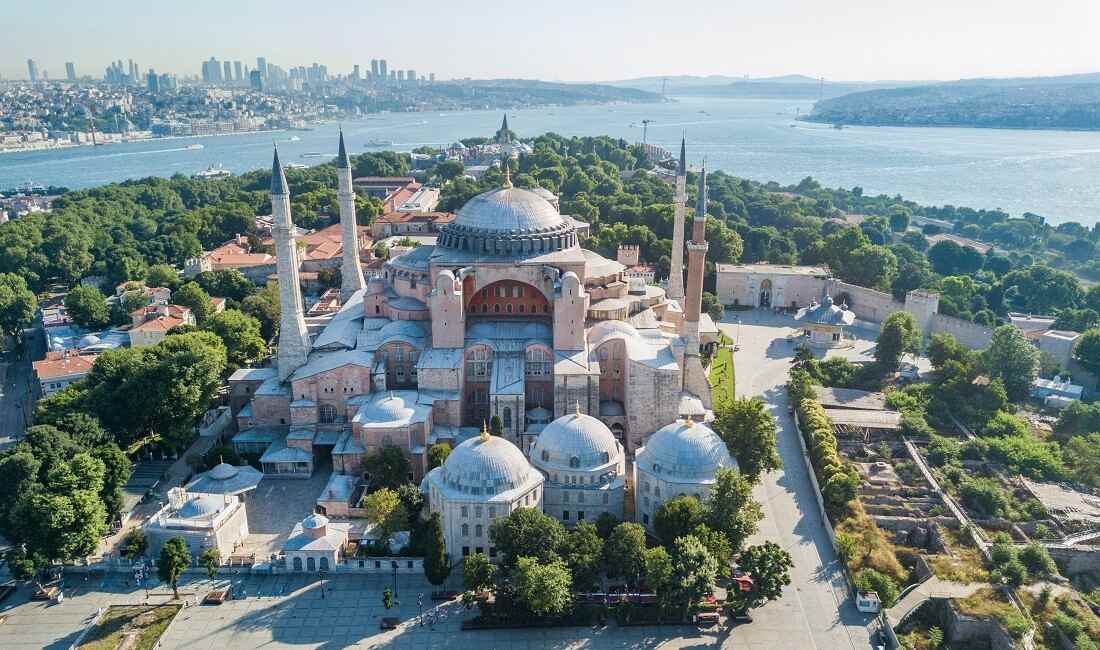
Hagia Sophia, which means “Holy Wisdom” in Greek, is a world-renowned monument located in Istanbul, Turkey. The building was initially built as a church in the Byzantine era by Emperor Justinian I in the 6th century AD. The construction of Hagia Sophia took almost six years to complete, and it became the largest cathedral in the world at the time. It was the main church of the Eastern Orthodox Church for nearly a thousand years until the Ottomans turned it into a mosque in the 15th century. The building became a UNESCO World Heritage Site in 1985 and opened as a museum in 1935.
Hagia Sophia was an important religious site during the Byzantine era. It was a place of worship and a symbol of the Byzantine Empire’s power and wealth. The cathedral was renowned for its impressive architecture, including its massive dome, intricate mosaics, and stunning interior decoration. The building was a center of Christian worship and a hub for pilgrims from all over the world. It also served as the venue for important religious events, including the coronations of several Byzantine emperors.
People from all over the world still visit Hagia Sophia because of its historical importance and beautiful architecture. As a museum, it has been an important cultural and educational center, showcasing the building’s unique history and architecture. The plan to turn Hagia Sophia into a mosque in 2020 has caused a lot of debate about what the building means and where it fits in today’s world. Regardless of its current status, Hagia Sophia remains a critical monument representing Istanbul’s historical and cultural heritage and the wider world.
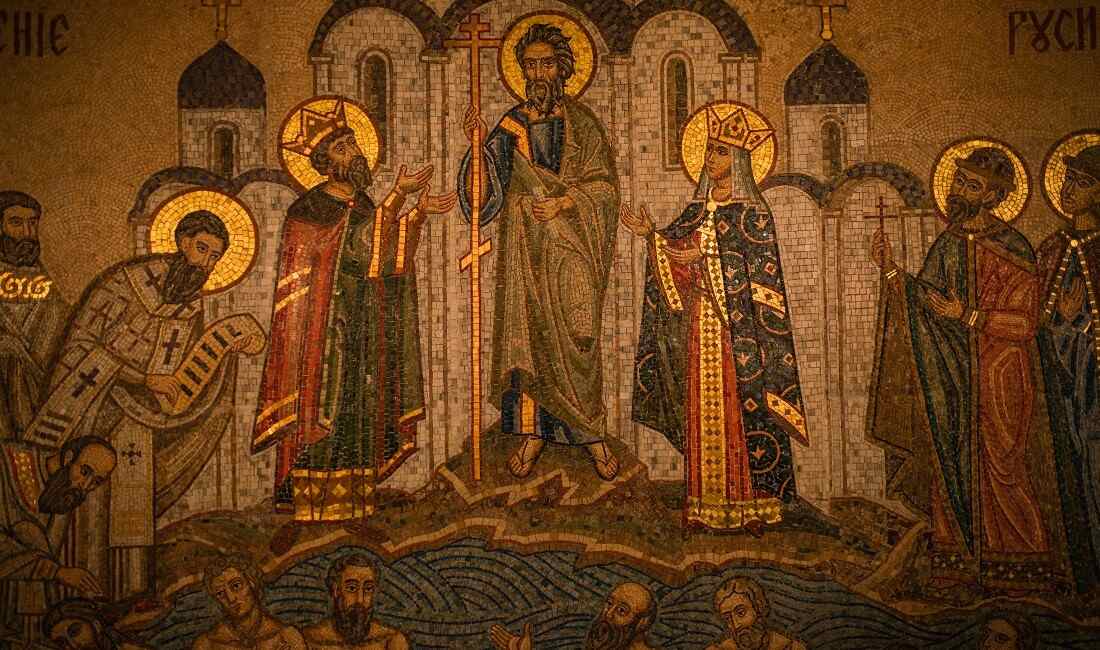
The Hagia Sophia is in Istanbul, Turkey’s European side. The structure is situated in Sultanahmet’s historic area, which is renowned for its significant historical and cultural past. Moreover, the site is positioned at the meeting point of the Bosporus Strait and the Sea of Marmara, which makes it a significant location for trade and transportation.
Istanbul has a temperate climate with warm summers and mild winters. Because Hagia Sophia is close to the sea, it often has humid weather, making the summers feel hotter, and the winters feel colder. The surrounding landscape is hilly and features several scenic viewpoints that provide breathtaking views of the city and the sea.
The area surrounding Hagia Sophia is rich in history and culture. The building is near several other significant historical sites, including the Topkapi Palace, the Blue Mosque, and the Basilica Cistern. The Grand Bazaar, one of the world’s oldest and largest covered marketplaces, is also nearby, providing visitors with a one-of-a-kind shopping experience. In addition, the region is a famous tourist attraction with rich culinary traditions and vibrant nightlife.
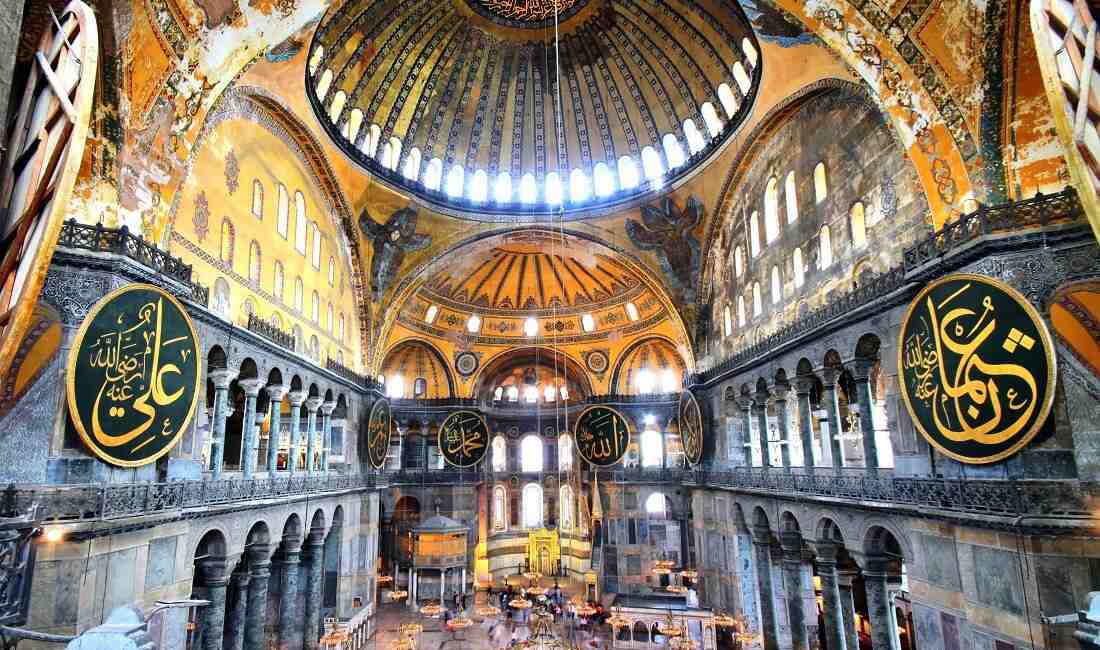
Early History: Hagia Sophia is an architectural marvel built in the 6th century AD during the reign of Emperor Justinian I. It was constructed in what is now Istanbul, Turkey, and originally served as a church. Hagia Sophia was considered the principal church of the Eastern Orthodox Church for almost a millennium. During its early history, the cathedral was known for its impressive architecture, which included its massive dome, intricate mosaics, and stunning interior decoration. The building’s design and construction were a vast undertaking involving architects and engineers across the Byzantine Empire. It was completed in just five years. The building’s massive dome was a technological marvel for its time. It was one of the giant unsupported domes in the world. Marble columns, exquisite mosaics, and other art enhanced the cathedral’s majesty. Many of these original parts are still there and show how important the building is in its history and architecture.
During the Byzantine Era: Hagia Sophia played a crucial role in the Byzantine Empire during the medieval period. It was the spiritual and cultural heart of the Eastern Orthodox Church and a symbol of imperial authority and wealth. The building was a place of worship and a hub for Christian pilgrimage, drawing visitors from across the empire and beyond. In addition to its religious significance, Hagia Sophia was also the site of important events in Byzantine history. For instance, several Byzantine emperors were crowned there, including Justinian I, who oversaw the cathedral’s construction. The building was also used as a location for imperial ceremonies, such as celebrating victory after military campaigns. Hagia Sophia was vital in shaping the empire’s religious, cultural, and political identity.
During the Ottoman Empire: Hagia Sophia was extensively renovated by the Ottomans in the 15th century. It was converted into a mosque, and many changes were made to the building’s interior and exterior. The Ottomans added several minarets to the building, increasing its visibility and prominence in the city skyline. They also removed many Christian iconographies, including mosaics and frescoes, covering them with plaster or paint. Islamic calligraphy and geometric motifs covered the building’s interior. Hagia Sophia served as a mosque for almost 500 years. It was an important symbol of Ottoman power and religion during this time. It played a crucial role in the daily lives of the local Muslim population. It was a center for Islamic worship and learning. In the 20th century, Hagia Sophia was converted into a museum, which allowed visitors from all over the world to appreciate the building’s rich history and architectural significance. The conversion into a museum helped to preserve the structure and its cultural heritage for future generations.
Modern Restoration: In 2020, Hagia Sophia was once again converted into a mosque, sparking controversy and debate about its historical significance and cultural heritage. The conversion involved the removal of the museum displays and restoring some of the Islamic features that were removed during the museum era. The restoration process has sparked criticism and support from people worldwide, highlighting the building’s continued significance in modern times. Despite the controversies surrounding its restoration, Hagia Sophia remains an important historical site and a symbol of the cultural heritage of Istanbul and the wider world.
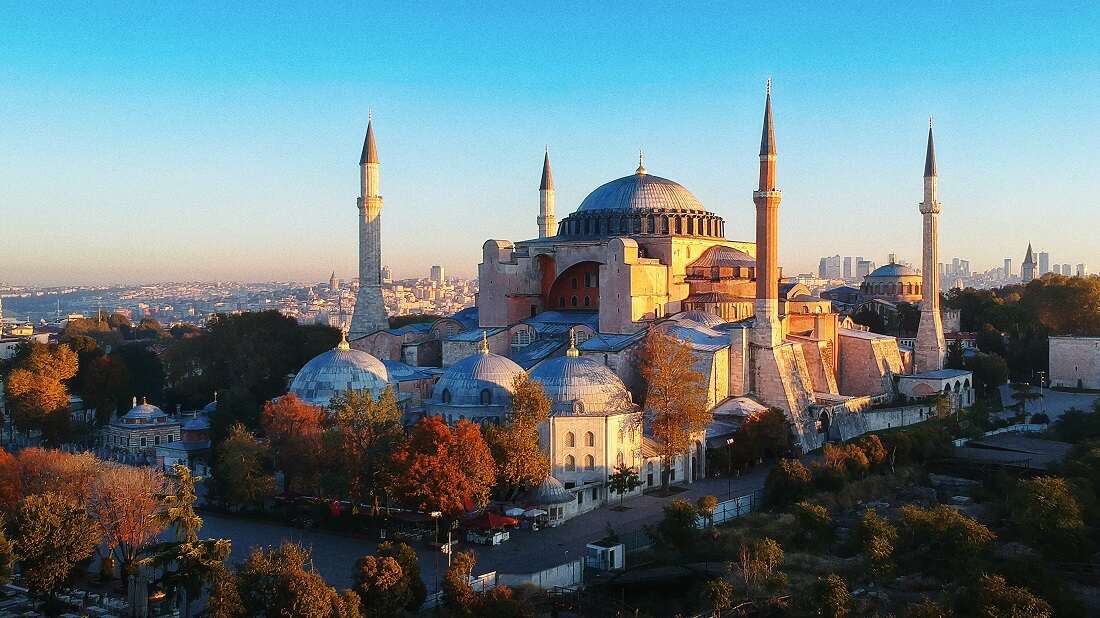
Hagia Sophia is an architectural masterpiece that blends Byzantine and Ottoman styles, showcasing its rich history as a church and a mosque. The building’s most notable feature is its massive dome, which is over 30 meters in diameter and rises to a height of 55 meters above the ground. This impressive dome was a marvel of engineering at its construction and continues to inspire awe in visitors today. The dome is supported by four substantial piers that provide the required structural support for the dome’s weight. The interior of the building is equally impressive, with intricate mosaics depicting religious scenes, marble columns, and other stunning architectural details that reflect the building’s past as a religious and cultural center. Even though they are on the walls and ceilings of the building, the intricate designs and bright colors of the mosaics have stood the test of time. In addition, the marble columns, which were brought from ancient Greek and Roman buildings, add a touch of grandeur and elegance to the building’s interior. Overall, Hagia Sophia’s architecture is a testament to the ingenuity and creativity of the builders who constructed it over a thousand years ago.
The dome of Hagia Sophia is an architectural marvel and one of the building’s most significant features. It was constructed in the 6th century AD and was the largest dome in the world at that time, rising to a height of 55 meters above the ground. The dome’s size and engineering innovation was a testament to the skills of the architects and builders who constructed it. What makes the dome even more remarkable is that it is unsupported, meaning it does not have any pillars or columns to hold it up. Instead, the dome’s weight is distributed evenly across four massive piers, which provide the necessary structural support for the crown. The dome’s impressive size and innovative design symbolized the Byzantine Empire’s power and wealth and continue to inspire awe in visitors today. It is also a significant architectural achievement that has influenced the design of other buildings, including mosques and cathedrals worldwide. Lastly, the dome of Hagia Sophia is still a sign of how intelligent and creative the people who built it over a thousand years ago were.
Hagia Sophia’s interior boasts a rich collection of mosaics and artwork, showcasing its cultural and religious significance. The mosaics are renowned for their intricate patterns, detailed imagery, and striking hues. Most of these mosaics were created during the Byzantine era, depicting stories from the life of Jesus Christ, the Virgin Mary, and other religious personalities. Apart from the mosaics, Hagia Sophia features a wide range of marble carvings, calligraphy, and decorative elements that demonstrate the building’s ornamental and artistic value.
Hagia Sophia is often compared to other historical and religious structures. For example, the building’s massive dome has been compared to the crown of the Pantheon in Rome. In contrast, its intricate mosaics are often compared to those found in Ravenna, Italy. The blending of Byzantine and Ottoman styles is also unique, and the building’s architecture has been cited as an influence on other religious structures in the region.
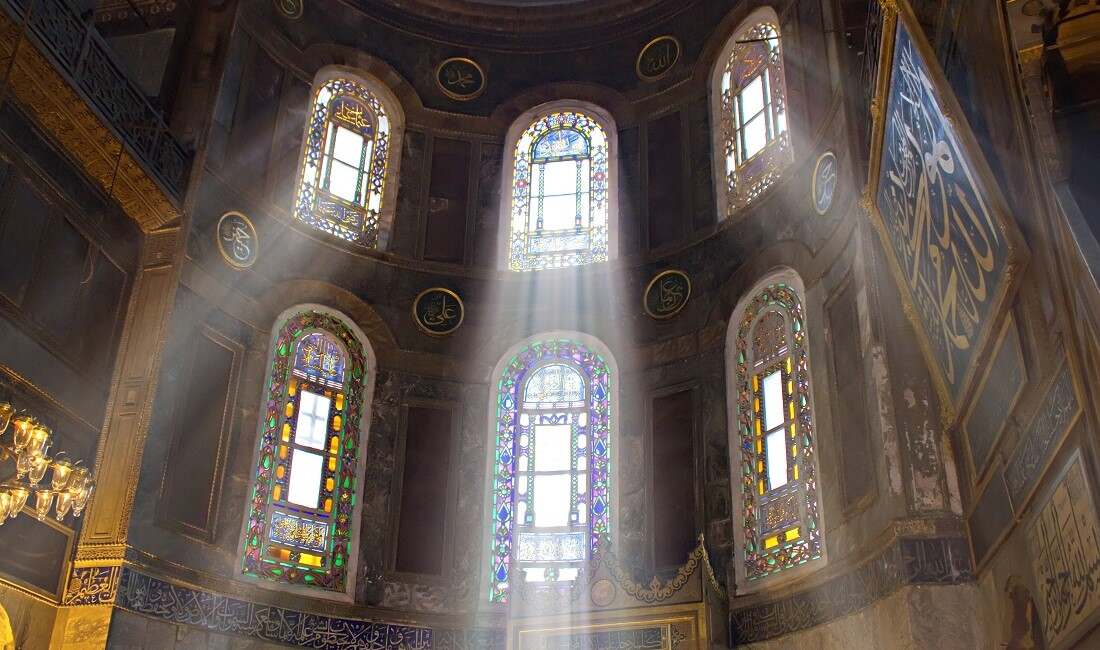
Hagia Sophia’s significance to Christianity cannot be overstated. For nearly a thousand years, it was the principal cathedral of the Eastern Orthodox Church. It served as a powerful symbol of religion. The building’s impressive architecture and elaborate decoration, including its mosaics, were designed to convey the power and glory of God. Today, Hagia Sophia is still an important place for Christians worldwide, and many people still think it is one of the world’s most important places of worship.
Hagia Sophia’s transformation into a mosque in the 15th century was a defining moment for the building and the Ottoman Empire. The conversion represented a shift in power and cultural identity as the Ottomans sought to assert their dominance over the Christian Byzantines. The building remained a mosque for almost 500 years until it was converted into a museum in the 20th century.
Hagia Sophia has played a role in interfaith dialogue between Christians and Muslims, both in its historical significance and its modern-day status as a symbol of controversy. The building has been a pilgrimage site for Christians and Muslims. Its conversion into a mosque in 2020 sparked debates about religious freedom and cultural heritage.
Since its conversion into a museum in 1935, Hagia Sophia has served as a symbol of Istanbul’s cultural heritage. She has attracted millions of visitors from around the world. The building’s museum status allowed for the preservation and restoration of its intricate mosaics and other artwork, which had been covered or removed during its time as a mosque. However, its recent conversion into a mosque has sparked controversy and debate about its future as a cultural landmark and its role in interfaith dialogue.
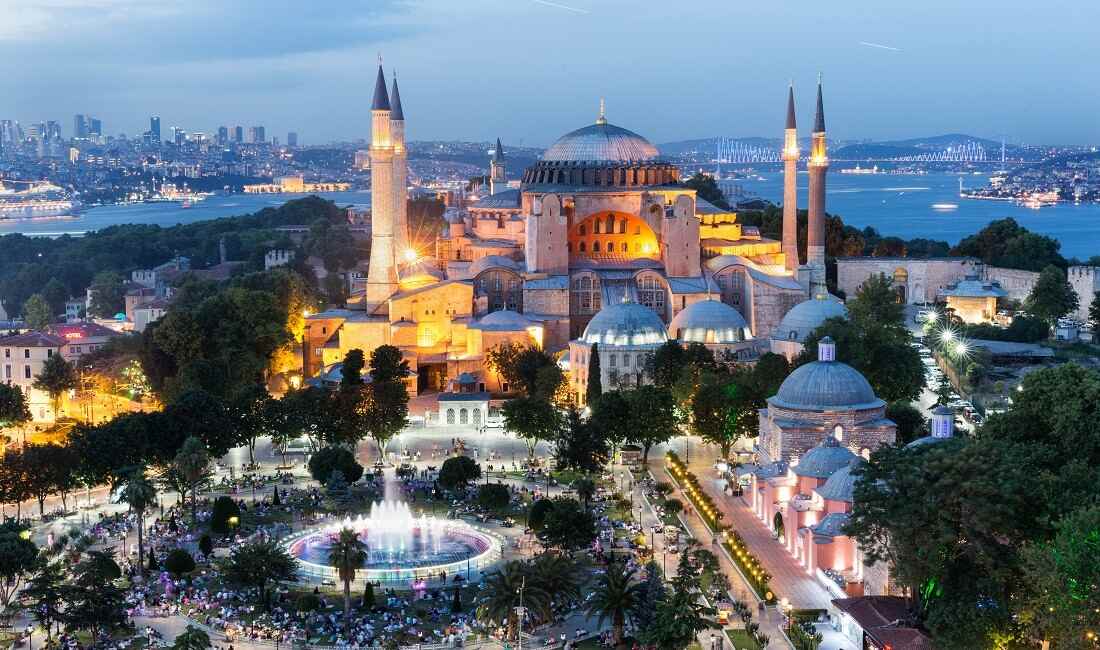
Suppose you are interested in exploring the rich history and culture of Istanbul. In that case, a visit to Hagia Sophia should be on your list. This architectural masterpiece has been a symbol of Istanbul’s cultural heritage for centuries. Moreover, it is a true marvel of human creativity and engineering. The breathtaking architecture, beautiful mosaics, and spectacular dome will fascinate you the instant you step inside.
Hagia Sophia has undergone many transformations throughout its long and varied history, serving as a church, a mosque, and now a museum. However, each layer of its history is visible in its unique features, making it an excellent destination for anyone interested in exploring the complex interplay between different cultures and religions.
But beyond its historical significance, a visit to Hagia Sophia is also a chance to support the preservation of a world-renowned cultural landmark. Your visit helps to ensure that this iconic monument remains accessible to future generations, allowing them to experience the awe-inspiring beauty and history of this incredible structure. It would be best not to miss Hagia Sophia, whether you are interested in history or architecture or simply admire beautiful and cultural places. If you ever find yourself in Istanbul, be sure to add it to your agenda so you may wonder at this incredible example of human creativity.
